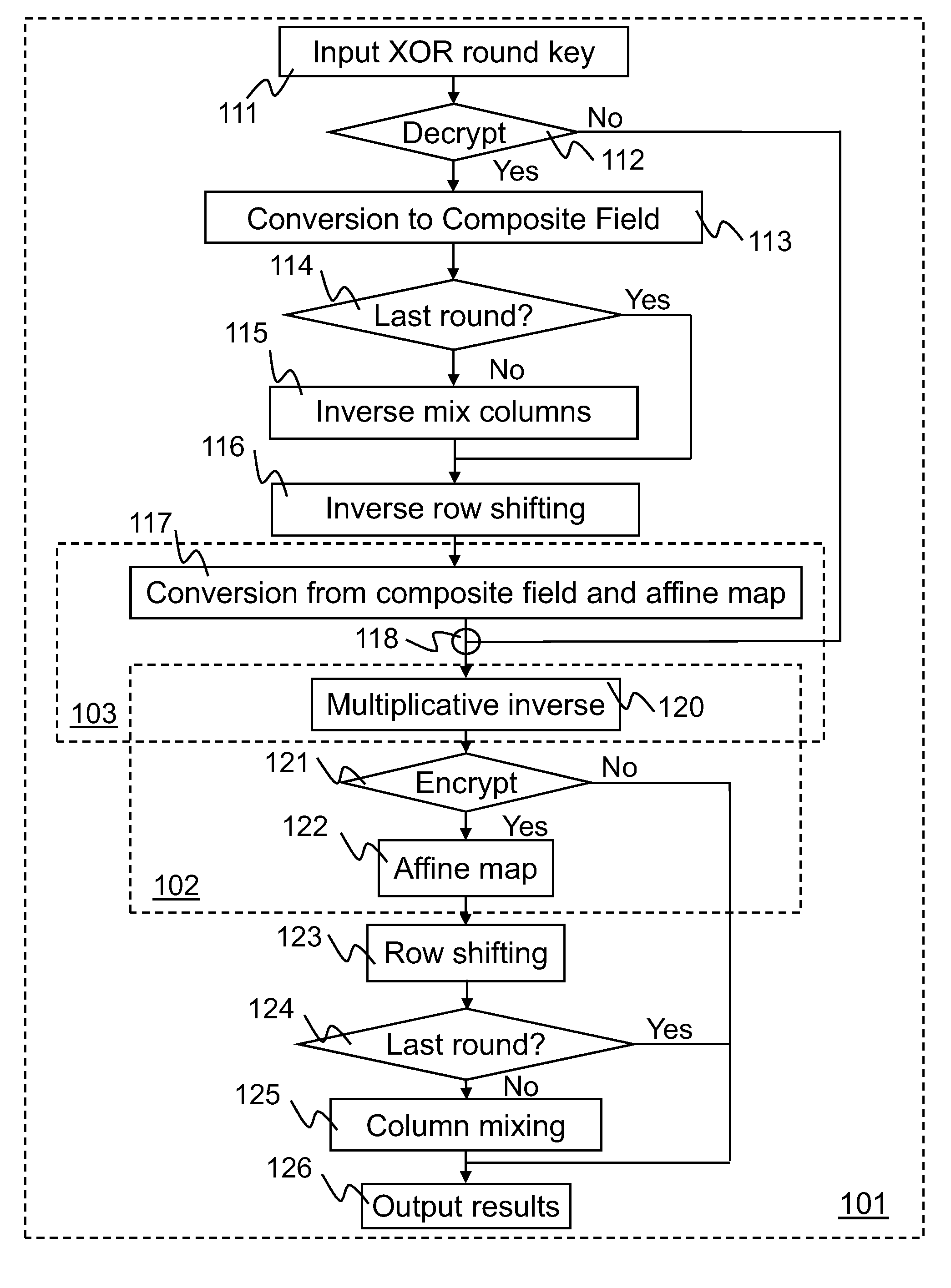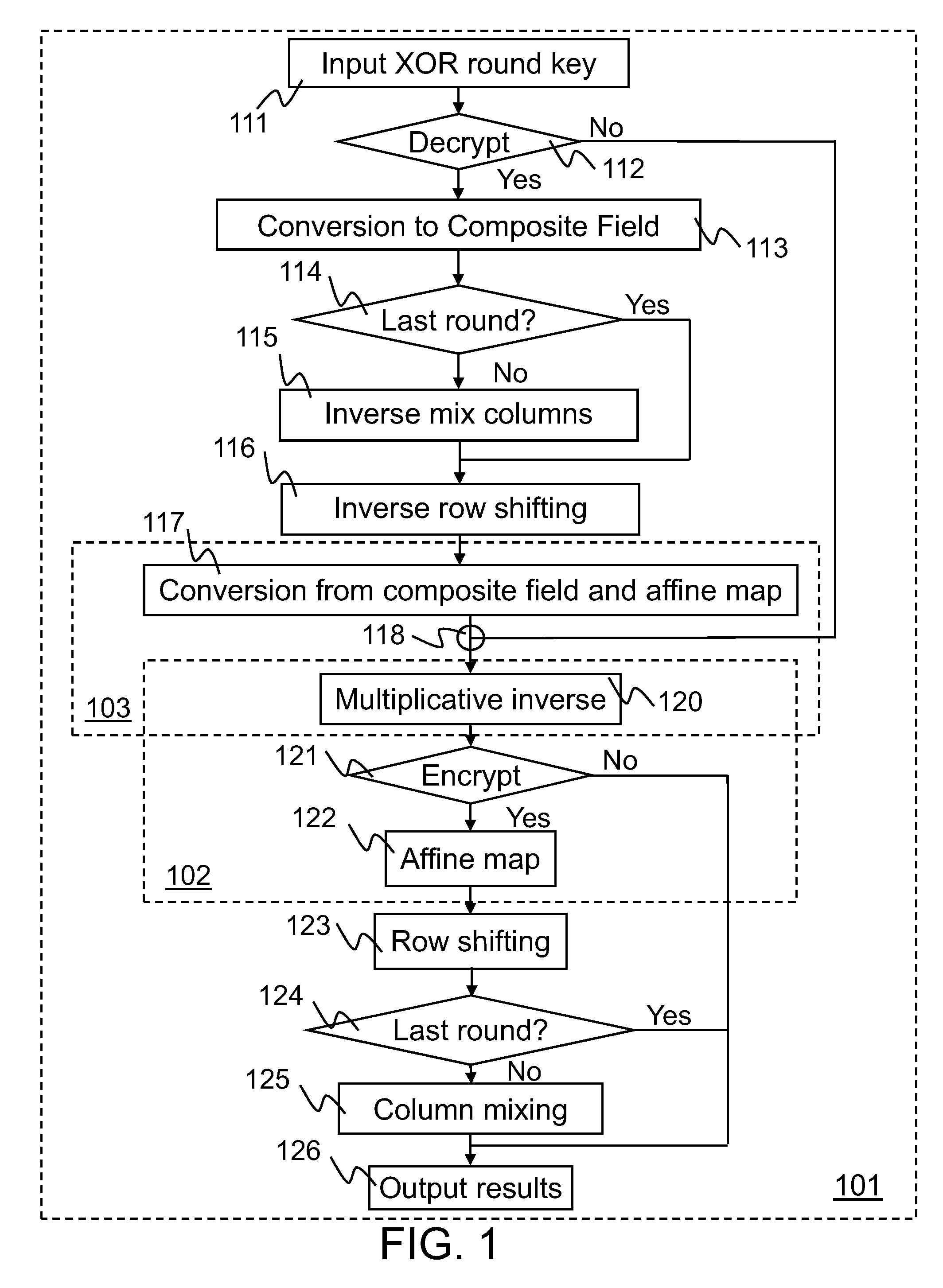Method and apparatus for efficiently implementing the advanced encryption standard
- Summary
- Abstract
- Description
- Claims
- Application Information
AI Technical Summary
Problems solved by technology
Method used
Image
Examples
Embodiment Construction
[0011]Implementations of Advanced Encryption Standard (AES) encryption and decryption processes are disclosed. In one embodiment of S-box processing, a block of 16 byte values is converted, each byte value being converted from a polynomial representation in GF(256) to a polynomial representation in GF(22)4). Multiplicative inverse polynomial representations in GF(22)4) are computed for each of the corresponding polynomial representations in GF(22)4). Finally corresponding multiplicative inverse polynomial representations in GF(22)4) are converted and an affine transformation is applied to generate corresponding polynomial representations in GF(256). In an alternative embodiment of S-box processing, powers of the polynomial representations are computed and multiplied together in GF(256) to generate multiplicative inverse polynomial representations in GF(256). In an embodiment of inverse-columns-mixing, the 16 byte values are converted from a polynomial representation in GF(256) to a ...
PUM
 Login to View More
Login to View More Abstract
Description
Claims
Application Information
 Login to View More
Login to View More - R&D
- Intellectual Property
- Life Sciences
- Materials
- Tech Scout
- Unparalleled Data Quality
- Higher Quality Content
- 60% Fewer Hallucinations
Browse by: Latest US Patents, China's latest patents, Technical Efficacy Thesaurus, Application Domain, Technology Topic, Popular Technical Reports.
© 2025 PatSnap. All rights reserved.Legal|Privacy policy|Modern Slavery Act Transparency Statement|Sitemap|About US| Contact US: help@patsnap.com



